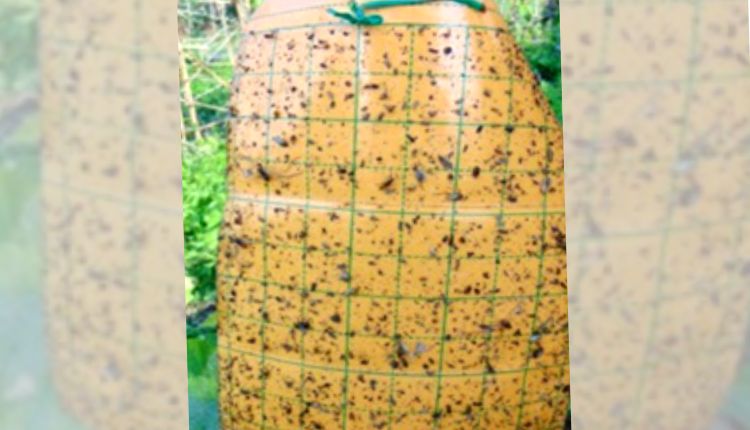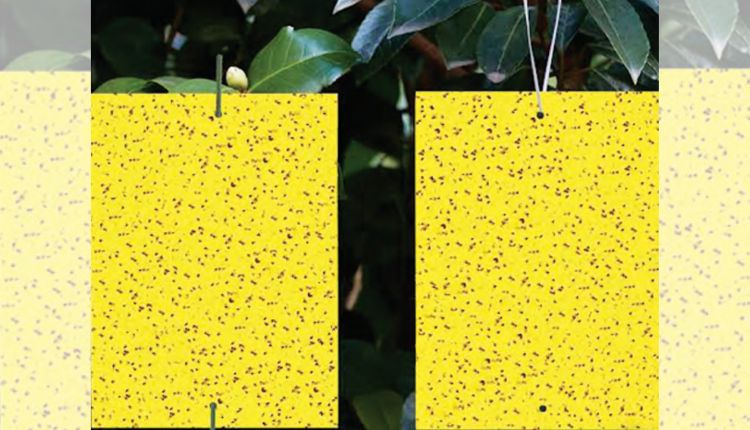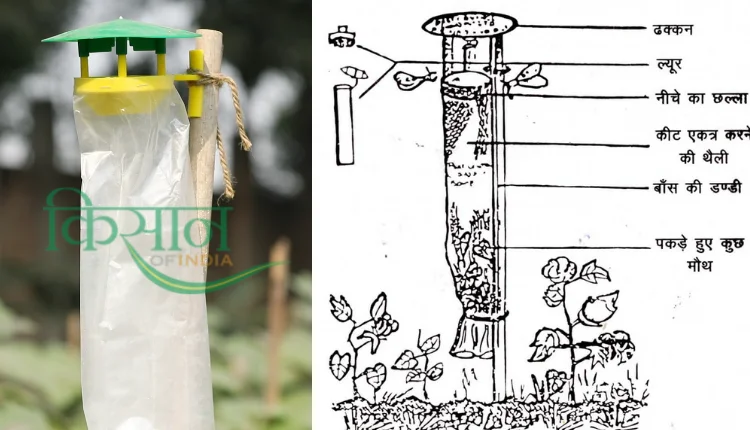Know how sticky traps are the safest insecticide for crops?
Farmers can easily make sticky traps at home by spending only Rs 15 to 20.
‘Sticky Trap’ is essential for the farmers to protect their crops from many harmful pests and diseases. The medicines and pesticides that are required for this are divided into at least three categories – chemical, biological and domestic. Chemical pesticides are produced in chemical factories of big multinational companies, whereas organic pesticides are also developed in commercial laboratories. While the biggest feature of domestic insecticide is that farmers can make it themselves with little effort and expense. ‘Sticky Trap’ is one such great household insecticide.
Experts believe that it is necessary to increase the awareness among the farmers regarding the maximum use of sticky traps. However, the benefits of sticky traps are continuously propagated among the farmers by Krishi Vigyan Kendras. Under the Deendayal Antyodaya Yojana National Rural Livelihood Mission, women self-help groups are also trained to manufacture sticky traps, so that sticky traps are easily accessible to farmers in villages.
Household Insecticide Sticky Trap
‘Sticky Trap’ is such a household insecticide that protects crops from the side effects of harmful insects without using any toxic chemicals. It is much cheaper than chemical pesticides. The use of sticky traps reduces the damage caused by pests to crops by 40 to 50 percent and does not cause any side effects to crops, farm soil, environment and human health. The use of sticky traps also reduces the cost of spraying chemical or organic pesticides on the crop. Along with this survey is also done easily that what kind of pest infestation is going on in the field or on the crop?

How Sticky Trap Works ?
A sticky trap is a sheet that is coated with a sticky substance. That’s why it can also be called ‘sticky trap’ or hunter’s trap. As soon as the insects and pests that harm the crop reach or sit on the sticky trap, they stick to it and then cannot harm the crop. Sticky Trap is made on a sheet of four colors – yellow, blue, white and black. Different colored sticky traps help attract different types of insects.
The significance of sticky trap colours
Yellow Sticky Trap: It is mostly used in vegetable crops. By its use, effective control can be found on white fly, aphid, leaf miner etc. and aphids attacking mustard crop.
Blue Sticky Trap: Many flowers and vegetables including paddy use blue colored sticky traps to control the thrips sucking pest.
White Sticky Traps: White sticky traps are used to control red beetle pests and bug pests in fruits and vegetables.
Black Sticky Trap: It is used for the control of tomato pests.
How to make sticky trap at home?
Sticky traps can also be purchased ready-made from the market. But they can be made even more easily at home. For this, a piece of tin, plastic, carton, cardboard, cord-board or hard-board is required which is about one and a half feet long and one foot wide. Make such holes on this piece so that it can be hung by tying it with a string. Now apply a thin layer of white grease on the upper surface of the piece. And that’s it, the sticky trap is ready! Instead of white grease, you can also make a sticky trap with a layer of Castor Oil or Mobil Oil. In this way, 15 to 20 rupees are spent on making sticky trap.
How to apply sticky trap in the fields?
A bamboo and a suitable string are also needed to hang the sticky trap in the field. About 10-15 sticky traps should be installed in one acre of field. Their height should be 50 to 75 cm more than the crop plants. This height gets in the flight path of insects and helps attract them.
When enough insects get stuck in the sticky trap, they should be destroyed and the sticky tape should be prepared again and hung in the fields. Sticky trap pieces made from tin, hardboard, and plastic sheets can be reused after repeated cleaning. Whereas sticky traps made of carton or cardboard get damaged after a couple of uses. Cleaning the sticky trap should be done with hot water.

Pheromone Trap
Consumption of crops produced using chemical pesticides has profound side effects on human health. It can be seen in the form of developmental problems in children, cancer, kidney and liver diseases, reproductive and infertility related problems and lung and throat diseases in adults. That’s why apart from sticky traps, pheromone traps have also been found to be very useful and effective in crop protection measures.
Pheromone traps are the only non-chemical way to kill caterpillars. The pheromone used in this is a chemical substance or secretion that is released by female caterpillars to attract male caterpillars to breed. But when the male caterpillars reach there after getting its smell, they get trapped in the trap. This interrupts the reproductive cycle of the caterpillars and gets rid of them.

Organic Pesticide
To avoid the side effects of chemical pesticides, there are other alternatives of organic pesticides and farmers should try to adopt them easily. Anyway, when there is full emphasis on promoting organic farming, then it is necessary to know that the use of chemical fertilizers and pesticides is prohibited in organic or natural farming. That is why scientists have standardized the process of making and using various neem products for use in organic farming. It is divided into products made from neem leaves and its seeds. By clicking the following weblink, you can know how neem tree can prove to be helpful in making best organic insecticides and home medicines?
Organic insecticides have the qualities of ‘Ek Sadhe Sab Sadhe’. It does not have any side effect on humans, soil, yield and environment and also effectively prevents crop enemies from pests and diseases. Therefore, whenever there is a need for pesticides, organic pesticides should be used first. They prove to be very effective in eliminating the enemies of the crop along with environmental protection.
Contact us: If farmers want to share information or experiences related to farming with us, then they can do this by calling us on the phone number 9599273766 or by writing an email to [email protected] or by sending your recording. Through Kisan of India, we will convey your message to the people, because we believe that if the farmers are advanced then the country is happy.



